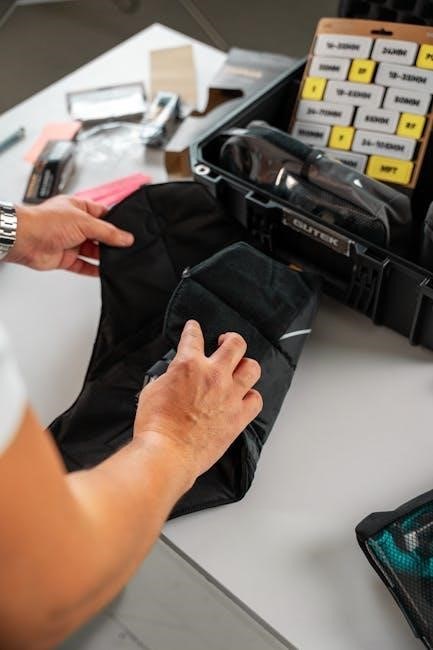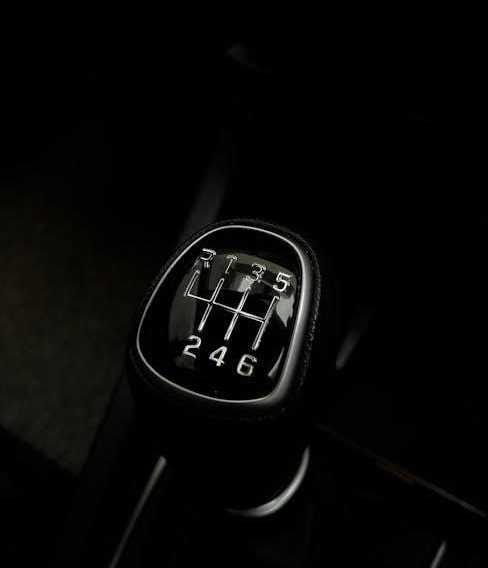The allure of blending modern LS power with classic chassis, coupled with driver engagement, fuels the rising trend of 5.3L LS manual swaps, captivating enthusiasts.
Enthusiasts often debate modifications to iconic vehicles, yet the dedication to engine swaps demonstrates a passion for personalization and performance enhancement.
Classic vehicle ownership presents unique challenges, but the reward of a customized, reliable machine—like an LS-swapped ride—often outweighs the difficulties.
Why Choose the 5.3L LS?
The 5.3L LS engine presents a compelling option for manual transmission swaps due to its robust construction, readily available parts, and impressive power potential. It strikes a sweet spot between affordability and performance, making it accessible to a wider range of builders. Unlike some high-performance engines, the 5.3L LS doesn’t necessarily demand extensive modifications to achieve substantial gains.
Furthermore, the engine’s widespread use in GM trucks and SUVs means a plentiful supply of cores and aftermarket support. This abundance translates to lower costs and easier sourcing of components. The inherent reliability of the LS platform also contributes to its appeal, offering a dependable foundation for a performance build. It’s a pragmatic choice for those seeking a powerful and relatively straightforward swap.
Popularity of Manual Swaps
The increasing popularity of manual transmission swaps, particularly with the 5.3L LS, stems from a desire for a more engaging driving experience. Many enthusiasts crave the control and connection offered by a manual gearbox, rejecting the perceived detachment of modern automatics. This trend represents a return to a more visceral form of driving, prioritizing driver involvement over convenience.
Moreover, manual swaps often unlock hidden performance potential, allowing for more precise gear selection and improved power delivery. The customization aspect also plays a significant role, as these swaps are often undertaken by individuals seeking to personalize their vehicles and express their automotive passion. It’s a statement of intent, a rejection of the mundane.
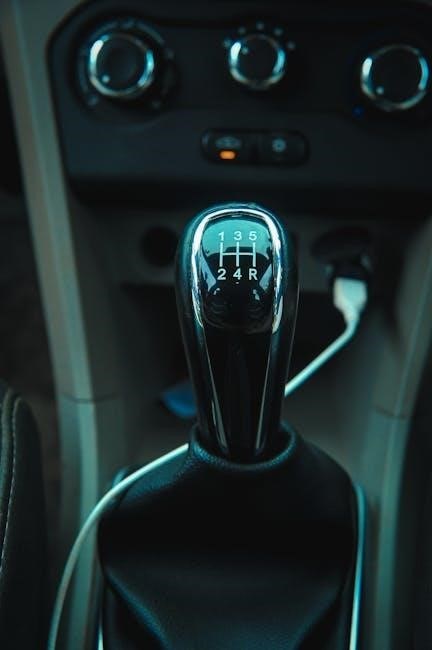
Understanding the 5.3L LS Engine
The 5.3L LS engine’s affordability, reliability, and readily available aftermarket support make it a prime candidate for swaps, offering substantial power potential.
Engine Specifications and Variants
The 5.3L LS engine, a cornerstone of General Motors’ LS family, boasts a robust cast-iron block and aluminum cylinder heads, typically delivering between 285 and 300 horsepower in stock form. Several variants exist, including the LM7, L19, and LH6, each with slight differences in intended application and internal components.
The LM7, commonly found in Silverado and Sierra trucks, is known for its durability, while the L19, often used in SUVs, offers a slightly different torque curve. The LH6 variant saw use in various GM vehicles. Understanding these nuances is crucial when selecting an engine for a manual swap, as different versions may require specific tuning or component adjustments to optimize performance and compatibility with the chosen transmission.
Common 5.3L LS Applications (Trucks, SUVs)
The 5.3L LS engine found widespread use in a diverse range of GM trucks and SUVs from the late 1990s through the 2010s. Popular applications include the Chevrolet Silverado and GMC Sierra pickup trucks, offering a balance of power and fuel efficiency for everyday use and towing. It also powered numerous SUVs, such as the Chevrolet Tahoe, Suburban, and GMC Yukon, providing ample power for family hauling and recreational activities.
This broad application means a plentiful supply of readily available engines, often at reasonable prices, making the 5.3L LS an attractive option for swap projects. The engine’s proven reliability in these vehicles further contributes to its popularity among enthusiasts seeking a dependable powerplant for their manual transmission conversions.
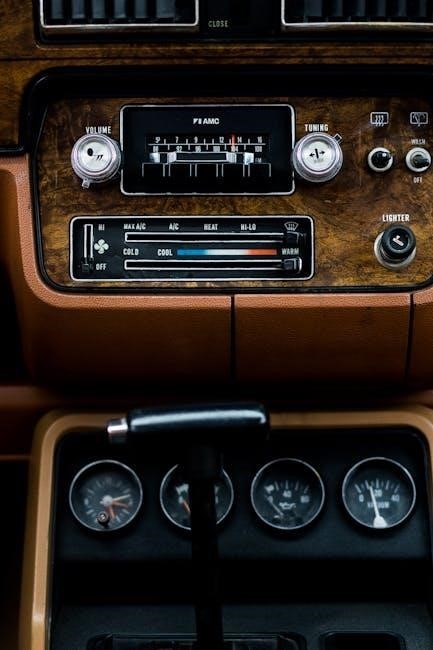
Transmission Options for a 5.3L LS Manual Swap
Selecting the right manual transmission is crucial; options range from the widely-used T56 to the robust NV3550, and even specialized choices like Jerico or Richmond.
T56 Transmission – A Popular Choice
The T56 transmission consistently emerges as a frontrunner for 5.3L LS manual swaps, largely due to its widespread availability and robust performance capabilities. Originally found in various GM performance vehicles, including Corvettes and Camaros, the T56 offers a satisfying six-speed manual experience.
Its relatively affordable price point, coupled with readily available aftermarket support for upgrades and rebuild parts, further solidifies its popularity. Swappers appreciate the T56’s ability to handle the torque output of a 5.3L LS engine with ease, making it a reliable choice for both street and occasional track use. However, careful consideration must be given to selecting the correct T56 variant to ensure compatibility with the LS engine’s input shaft spline count.
NV3550 Transmission – Durability and Cost
For those prioritizing sheer durability and a more budget-friendly approach to their 5.3L LS manual swap, the NV3550 transmission presents a compelling alternative. This five-speed manual, commonly found in heavy-duty trucks and SUVs, is renowned for its robust construction and ability to withstand significant torque.
While it may not offer the same sleekness or gear ratios as the T56, the NV3550 excels in applications where reliability and cost-effectiveness are paramount. Its simpler design often translates to lower rebuild costs and easier maintenance. However, potential swappers should be aware that the NV3550’s shift feel is generally heavier and less refined than that of the T56.
Other Potential Transmission Options (e.g., Jerico, Richmond)
Beyond the popular T56 and NV3550, several other manual transmission options can be considered for a 5.3L LS swap, catering to specific performance goals and budgets. Jerico transmissions, known for their straight-cut gears and exceptional strength, are favored in drag racing applications, offering quick, precise shifts.
Richmond Gear transmissions provide another high-performance alternative, boasting robust construction and a range of gear ratios. However, these options typically come at a higher price point than the T56 or NV3550. Careful consideration of intended use – street driving, track days, or competition – is crucial when selecting a less common transmission.
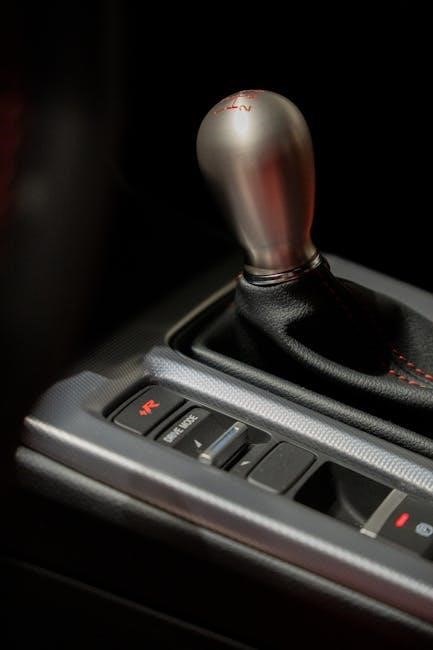
Key Components Needed for the Swap
A successful 5.3L LS manual swap demands careful parts selection: an ECU, wiring harness, clutch kit, flywheel, and a custom transmission crossmember are essential.
Engine Management System (ECU) and Harness
The engine management system is arguably the most critical component of a 5.3L LS manual swap, demanding careful consideration; Retaining the original ECU requires extensive reprogramming to accommodate the manual transmission, eliminating torque management and enabling proper operation.
Alternatively, an aftermarket ECU, such as those from Holley or FiTech, offers greater flexibility and simplified tuning. A new wiring harness is almost always necessary, tailored to the chosen ECU and the specific vehicle application.
Ensure the harness supports all necessary sensors and actuators, including those for the manual transmission. Proper ECU wiring and tuning are paramount for optimal performance, reliability, and to avoid potential engine damage.
Clutch Kit and Flywheel
Selecting the correct clutch kit and flywheel is crucial for a successful 5.3L LS manual swap, directly impacting driveability and longevity. The flywheel must be compatible with the chosen transmission and engine crankshaft, often requiring a specific LS pattern.
Clutch kits vary significantly in clamping force, catering to different power levels and driving styles. Consider a heavy-duty kit for higher horsepower applications or aggressive driving.
Pay attention to clutch disc diameter and spline count to ensure compatibility with the transmission input shaft. A properly matched clutch and flywheel combination will deliver smooth engagement and reliable performance.
Transmission Crossmember and Mount
A robust transmission crossmember is essential for securely supporting the manual transmission within the vehicle’s chassis during a 5.3L LS swap. Often, factory crossmembers require modification or complete replacement due to incompatibility with the new transmission.
Aftermarket crossmembers specifically designed for LS swaps are readily available, offering a direct fit and proper alignment. The transmission mount itself must also be compatible, isolating vibrations and minimizing noise.
Proper alignment is critical to prevent driveline angles that cause vibrations or premature wear. Ensure the crossmember and mount combination positions the transmission correctly relative to the engine and rear axle.
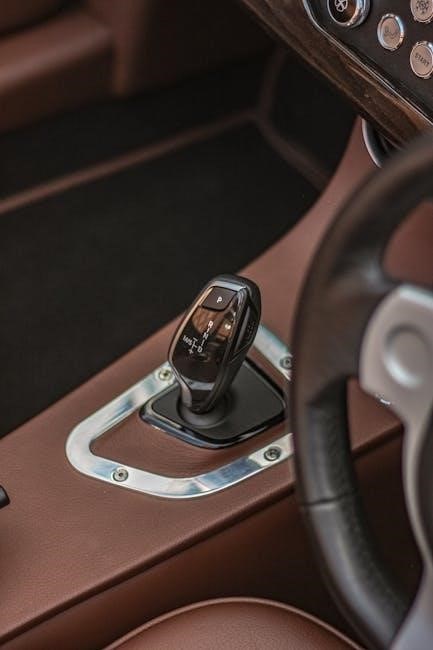
Preparing the Vehicle for the Swap
Diligent preparation is key; removing the original powertrain and assessing the engine bay for necessary modifications ensures a smoother 5.3L LS manual swap process.
Removing the Original Engine and Transmission
Before the exhilarating installation of the 5.3L LS and manual transmission, a meticulous removal of the existing powertrain is paramount. This initial step demands careful disconnection of all wiring harnesses, fuel lines, and cooling system components.
Support the engine with an engine hoist to safely lift it from the engine bay, followed by the removal of the original transmission. Thoroughly label and document each disconnected component to simplify reassembly if needed, or to aid in selling off the original parts.
Pay close attention to exhaust manifolds and any brackets attached to the engine or transmission, as these may need to be retained or modified for the LS swap. A clean engine bay facilitates easier installation and inspection, setting the stage for a successful transformation.
Modifying the Engine Bay (if necessary)
Post-removal, assess the engine bay for potential modifications required to accommodate the 5.3L LS. Often, LS swaps necessitate adjustments to firewall clearance, particularly with truck accessories. Careful measurement and strategic trimming or hammering may be needed to ensure proper engine placement.
Inspect the steering components and exhaust routing, anticipating potential interference with the LS engine and headers. Modifications might include relocating steering linkage or adapting the exhaust system.
Consider the mounting points for the new transmission crossmember; reinforcement or fabrication may be necessary. Addressing these modifications proactively streamlines the installation process and prevents unforeseen complications later on, ensuring a clean and reliable swap.
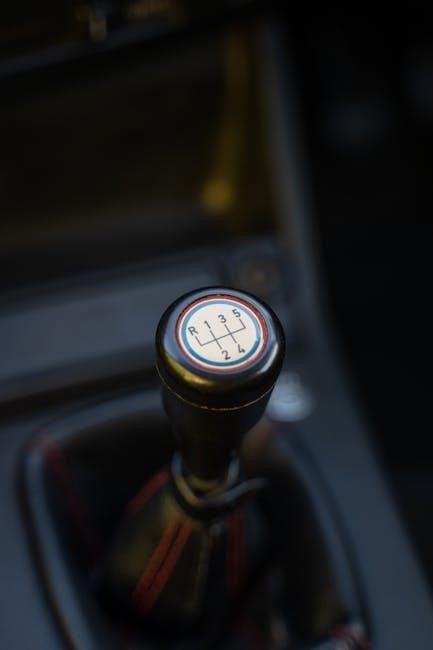
Installation Process – Step-by-Step Overview
Carefully lower the 5.3L LS into the bay, aligning mounts precisely. Connect the transmission, then address driveline components for a smooth, functional swap.
Engine Mounting and Alignment
Achieving proper engine mounting and alignment is paramount for a successful 5.3L LS manual transmission swap. Begin by installing the engine mounts designed for your specific vehicle chassis and LS engine configuration. Double-check compatibility before proceeding!
Carefully lower the engine into the engine bay, utilizing an engine hoist and taking extreme caution to avoid damaging any components. Align the engine mounts with their corresponding locations on the chassis, ensuring a snug and secure fit. Precise alignment minimizes vibrations and stress on the drivetrain.
Verify proper clearance between the engine, chassis, and surrounding components. Minor adjustments may be necessary to achieve optimal positioning. A misaligned engine can lead to premature wear and potential failure, so meticulous attention to detail is crucial during this stage.
Transmission Installation and Connection
With the engine securely mounted, the next critical step is installing the chosen manual transmission. Carefully lift the transmission into position, aligning it with the engine’s bellhousing. Ensure the pilot bearing is correctly installed in the flywheel to support the transmission’s input shaft.
Securely bolt the transmission to the engine, using the appropriate hardware and torque specifications. Next, connect the clutch linkage or hydraulic system, verifying smooth and full engagement. Proper connection is vital for seamless gear changes.
Finally, attach the driveshaft to the transmission’s output shaft, ensuring it’s properly balanced and aligned with the rear differential. Double-check all connections for tightness and security before proceeding to the next phase of the swap.
Driveline Components (Driveshaft, Rear End)
After transmission installation, attention shifts to the driveline. The original driveshaft may require modification or replacement to accommodate the new transmission’s output shaft and vehicle ride height. Custom driveshafts are often necessary for optimal fitment and performance.
Inspect the rear end for compatibility with the increased power of the 5.3L LS engine. Depending on intended use, upgrading the rear end’s gears or differential may be prudent for enhanced acceleration and durability.
Ensure proper u-joint angles are maintained throughout the driveline to minimize vibrations and maximize efficiency. A properly configured driveline is crucial for a smooth and reliable driving experience.
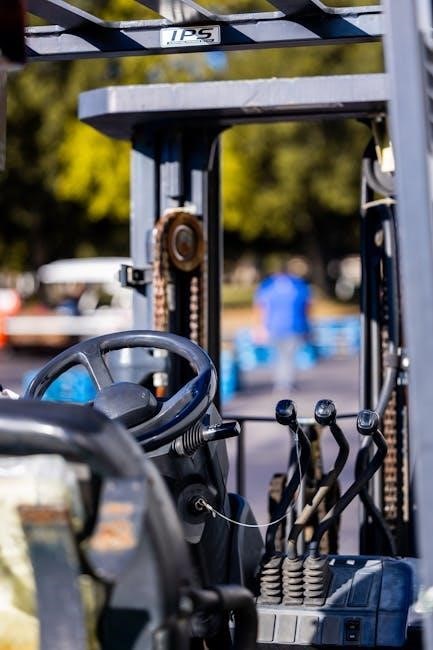
Wiring and Fuel System Considerations
Successful LS swaps demand meticulous wiring harness integration and ECU tuning for optimal engine control. Upgraded fuel pumps and lines are vital for consistent fuel delivery;
ECU Wiring and Tuning
The engine control unit (ECU) and its associated wiring harness represent a significant aspect of the 5.3L LS manual swap. Retaining the original ECU often requires substantial modification or opting for an aftermarket solution like Holley or EFI Live.
Proper wiring ensures seamless communication between the engine and other vehicle systems. Tuning is crucial to calibrate the ECU for the new transmission, optimizing fuel delivery, ignition timing, and overall performance. A professional dyno tune is highly recommended to unlock the engine’s full potential and ensure reliability.
Addressing the Vehicle Speed Sensor (VSS) is paramount for accurate speedometer readings and proper transmission function. Careful attention to detail during wiring and tuning will yield a smooth and powerful driving experience.
Fuel Pump and Fuel Lines
The 5.3L LS engine demands a robust fuel system capable of delivering sufficient fuel under varying loads. Often, the original fuel pump will be inadequate, necessitating an upgrade to a higher-flow unit, typically an in-tank pump designed for LS engines.
Fuel line sizing is equally critical; upgrading to larger diameter fuel lines minimizes pressure drop and ensures consistent fuel delivery. Consider using braided stainless steel fuel lines for durability and safety. Adapters may be required to connect the LS engine to the existing fuel system.
Proper fuel pressure regulation is essential for optimal engine performance and preventing damage. A return-style fuel system is generally preferred for LS swaps, providing stable fuel pressure.

Cooling System Modifications
Maintaining optimal engine temperature is crucial; therefore, upgrading the radiator and fan is often necessary for a 5.3L LS swap, ensuring reliable cooling performance.
Radiator and Fan Selection
Choosing the right radiator and fan setup is paramount for a reliable 5.3L LS manual swap, as the factory cooling components may be insufficient for the increased demands. Consider an aluminum radiator with increased core volume and surface area for enhanced heat dissipation.
Fan selection depends on available space and desired cooling capacity. Electric fans offer precise temperature control and eliminate the parasitic drag of a mechanical fan; Dual electric fans are often recommended for optimal cooling, especially in demanding conditions or with air conditioning. Ensure the fan shroud is properly sealed to maximize airflow through the radiator. Carefully assess the vehicle’s specific needs and driving style to select components that deliver consistent and effective cooling performance.
Coolant Lines and Hoses
Upgrading coolant lines and hoses is crucial during a 5.3L LS manual swap to ensure a secure and leak-free cooling system. Flexible silicone hoses are highly recommended over traditional rubber hoses, offering superior heat resistance and longevity.
Carefully route the coolant lines to avoid contact with exhaust components or moving parts. Utilize quality hose clamps to prevent slippage and maintain consistent pressure. Consider using pre-bent coolant lines designed specifically for LS swaps to simplify installation and ensure proper fitment. Thoroughly inspect all connections for leaks after installation and during initial engine break-in. Prioritize durable materials and secure connections for a reliable cooling system;
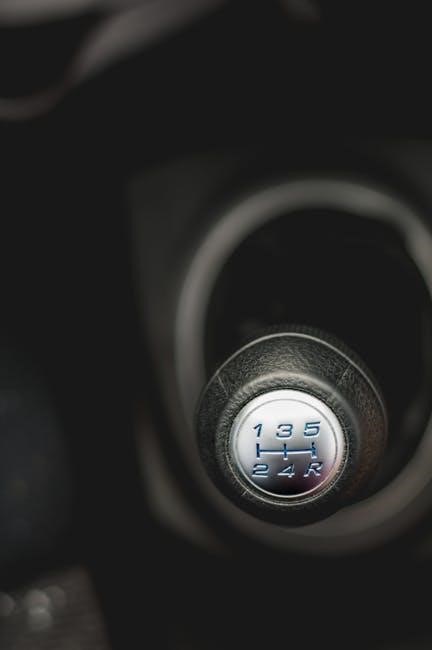
Potential Challenges and Solutions
LS swaps can present hurdles like exhaust fitment, pedal assembly integration, and shifter adjustments, but resourceful solutions and aftermarket parts abound for success.
Exhaust System Compatibility
One frequent challenge during a 5.3L LS manual swap involves exhaust system compatibility. Factory exhaust manifolds or downpipes often interfere with the new transmission or chassis components, necessitating modifications or complete replacement.
Solutions range from utilizing aftermarket headers designed for LS swaps in specific vehicle applications to custom-fabricating exhaust systems. Careful consideration must be given to exhaust routing, ground clearance, and desired sound levels.
Adapting existing exhaust components might require welding and adjustments, while a complete system offers a cleaner, more optimized fit. Addressing exhaust compatibility early prevents frustrating roadblocks during the installation process, ensuring a smooth and satisfying outcome.
Pedal Assembly and Linkage
Transitioning to a manual transmission necessitates a functional pedal assembly, often requiring sourcing and installation of a compatible unit. Vehicles originally equipped with automatic transmissions lack the necessary clutch pedal and associated linkage.
Aftermarket kits provide complete solutions, including pedals, master cylinders, and linkage components tailored for LS swaps. Proper adjustment of the linkage is crucial for smooth clutch engagement and preventing premature wear.
Careful attention to pedal placement and travel ensures comfortable operation. Incorrectly installed or adjusted linkages can lead to difficulty shifting or clutch slippage, impacting the driving experience and potentially damaging components.
Shifter Installation and Adjustment
Selecting a shifter compatible with the chosen transmission is paramount for a satisfying driving experience. Options range from stock-style shifters to short-throw upgrades, influencing shift feel and precision.
Proper installation involves securing the shifter to the transmission and routing the shift linkage correctly; Precise adjustment of the linkage is vital to ensure accurate gear selection and prevent binding or looseness.
Incorrectly adjusted shifters can result in missed shifts or difficulty engaging certain gears. Fine-tuning the linkage often requires patience and iterative adjustments to achieve optimal performance and driver comfort during operation.
